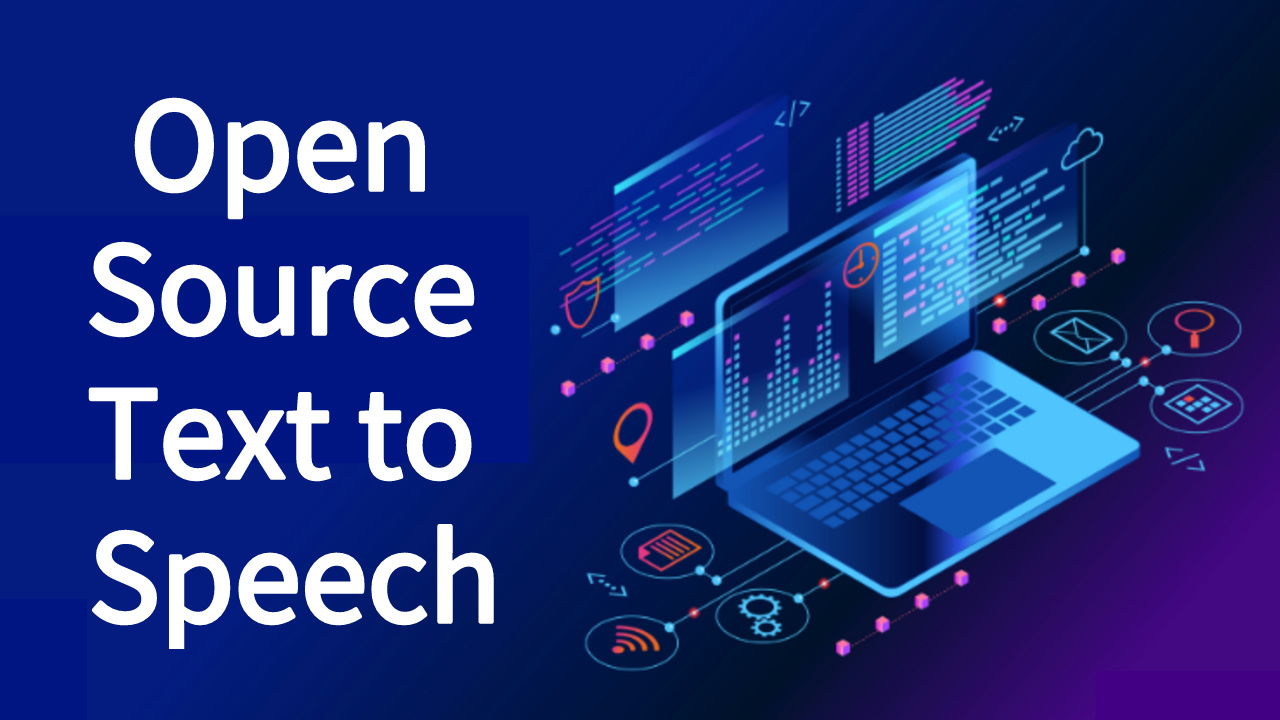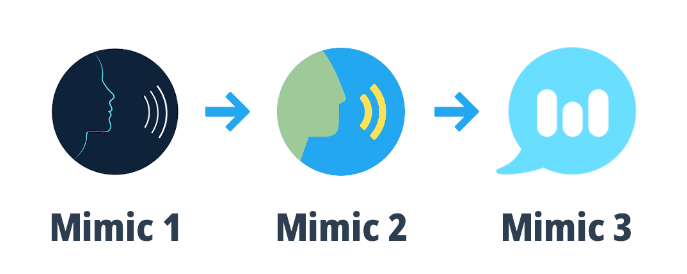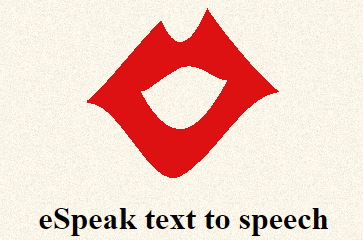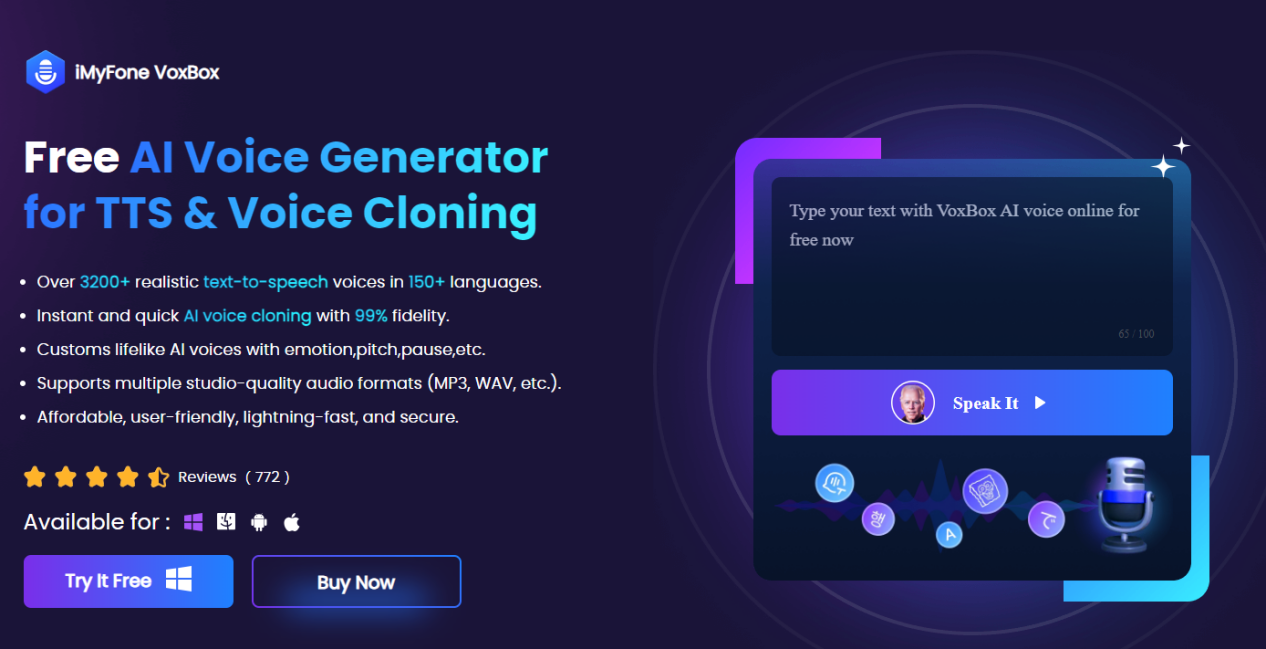Open source text to speech refers to publicly accessible code related to text-to-speech technology. Copyright holders of open-source software grant users the rights to use, study, modify, and distribute the software and its source code for any purpose. Open-source software can be developed collaboratively and openly. As for text-to-speech, it refers to the process of transforming provided text into speech using technology.

Part 1: Top 10 Open Source Text to Speech Software
1. MaryTTS
MaryTTS is an open-source multilingual text-to-speech synthesis platform written in Java. It was originally developed as a collaborative project between the DFKI Language Technology Lab and the Saarland University Speech Research Institute. It is now maintained by the Multimodal Speech Processing Group of MMCI and DFKI's Advanced Research Group.
As of version 5.2, MaryTTS supports German, British and American English, French, Italian, Luxembourgish, Russian, Swedish, Telugu, and Turkish; with more languages in preparation.

Main Features
Multilingual Support: MaryTTS supports multiple languages, including English, German, French, etc., suitable for global users.
Modular Architecture: MaryTTS adopts a modular architecture, allowing users to choose and add specific speech synthesis modules according to their needs.
Rich Speech Synthesis Features: MaryTTS offers rich speech synthesis features, including pronunciation adjustment, volume control, speed adjustment, etc., allowing users to customize according to their needs.
Limitations:


2. Mimic
Mimic is a series of text-to-speech engines by Mycroft AI. Over the years, Mimic, like other Mycroft components, has become clearer, faster, and more flexible.
Mimic 1 is a fast, lightweight TTS engine based on the Carnegie Mellon University FLITE software. It concatenates speech to create full phrases.
Mimic 2 is our older machine learning TTS engine designed to run in the cloud. It has been the default voice for most Mycroft installations over the years.
Mimic 3 is a privacy-focused open-source neural text-to-speech (TTS) engine that can run faster than real-time on low-end devices like the Raspberry Pi 4. In human terms, this means it sounds great, it can run entirely offline or in the cloud, and you can trust it with confidence.

Main Features
Cross-Platform Support: Mimic can run on multiple operating systems, including Windows, Mac, and Linux, making it widely applicable.
Multiple Speech Synthesis Methods: Mimic supports various speech synthesis methods, including rule-based synthesis and statistical-based synthesis, allowing users to choose the appropriate method according to their needs.
Limitations:


3. eSpeak
eSpeak is a compact open-source software speech synthesizer designed for Linux and Windows. Originally known as Speak, it was initially developed for Acorn/RISC_OS computers starting in 1995. It was later renamed to eSpeak. While eSpeak offers clear and fast speech, it may not sound as natural or fluent as larger synthesizers based on recordings of human speech.

Main Features
Lightweight: eSpeak is a lightweight speech synthesis engine with a small footprint, suitable for resource-constrained environments.
Multilingual and Voice Style Support: eSpeak supports multiple languages and voice styles, allowing users to choose the appropriate voice and style according to their needs.
Flexible Configuration: eSpeak can be flexibly configured through parameters, allowing users to adjust parameters such as pitch, speed, etc., to meet the needs of different scenarios.
Limitations:


4. YakiToMe
YakiToMe is a free online Text-to-Speech (TTS) converter that allows you to convert text into MP3 or WAV audio file formats. You can later download the converted files to listen to them on an MP3 player. You can also share the audio files with others via email, Facebook, and more.
Main Features
Online Service and API Integration: YakiToMe provides online speech synthesis services and API integration, allowing users to access and use them via the Internet, convenient and fast.
Multilingual Support: YakiToMe supports multiple languages, including English, Chinese, Japanese, etc., suitable for global users.
Customization Options: YakiToMe offers customized speech synthesis options, allowing users to adjust parameters such as voice, volume, speed, etc., according to their needs.
Limitations:


5. OpenTTS
OpenTTS is an open-source Text-to-Speech (TTS) server that offers unified access to various TTS systems and voices in multiple languages. It supports a variety of languages and a subset of Speech Synthesis Markup Language (SSML), allowing the use of multiple voices and TTS systems within the same SSML document.
A notable feature of OpenTTS is its extensive language support. Integrated with various TTS systems like Larynx, Coqui-TTS, and nanoTTS, it includes languages such as English, German, French, Spanish, and more.
Main Features
Multilingual Support: OpenTTS supports multiple languages, suitable for global users.
Simple and Easy to Use: OpenTTS provides a simple and easy-to-use interface and operation method, allowing users to use it without requiring a professional technical background.
Limitations:


6. Coqui TTS
Coqui TTS is a super cool text-to-speech model that allows you to clone voices in different languages with just a 3-second audio clip. You can segment the text into sentences and generate audio for each sentence. Then, concatenate the audio files to produce the final audio. Built on top of Tortoise, Coqui TTS has undergone significant model changes, making cross-lingual voice cloning and multi-lingual speech synthesis super easy.
Main Features
Multilingual Support: Coqui TTS supports multiple languages, including English, Spanish, French, etc., suitable for global users.
High-Quality Speech Synthesis: Coqui TTS is based on deep learning technology, capable of generating high-quality speech synthesis that is natural and fluent.
Limitations:


7. CMU Flite TTS
CMU Flite (festival-lite) is a small, fast, runtime open-source text-to-speech synthesis engine developed by CMU, primarily designed for small embedded machines and/or large servers. Flite is designed as an alternative text-to-speech synthesis engine to Festival, for building voices using the FestVox voice building toolkit.
Main Features
Lightweight: CMU Flite TTS is a lightweight speech synthesis engine with a small footprint, suitable for embedded systems and low-resource environments.
Fast: CMU Flite TTS has fast synthesis speed, capable of achieving real-time speech synthesis.
Multilingual Support: CMU Flite TTS supports multiple languages, suitable for global users.
Limitations:


8. ESPnet
ESPnet is an end-to-end speech processing toolkit that focuses primarily on end-to-end speech recognition and end-to-end text-to-speech. Currently, there are two versions: ESPnet1 and ESPnet2. ESPnet1 only supports multi-GPU training within a single node, while ESPnet2 supports distributed settings across multiple nodes. You can choose according to your needs.
Main Features
End-to-End Speech Processing Toolkit: ESPnet provides an end-to-end speech processing toolkit covering multiple tasks such as speech recognition and speech synthesis.
Flexible Model Configuration: ESPnet supports flexible model configuration and training processes, allowing users to choose suitable models and parameters according to their needs.
Support for Multiple Languages and Voice Styles: ESPnet supports multiple languages and voice styles, suitable for global users.
Limitations:


9. Festival Speech Synthesis System
Festival provides a general framework for building speech synthesis systems and includes examples of various modules. Overall, it offers full-text speech synthesis through many APIs: from shell-level, through a command interpreter, as a C++ library, and from Java and Emacs interfaces.
It is written in C++, uses the Edinburgh Speech Tools library for low-level architecture, and has a scheme (SIOD)-based command interpreter for control. Documentation is provided in FSF texinfo format, which can generate printed manuals, info files, and HTML.
Main Features
Rich Speech Synthesis Features: Festival offers rich speech synthesis features, including pronunciation adjustment and volume control, allowing users to customize as needed.
Scalability: Festival is a modular speech synthesis system, allowing users to extend functionality through plugins to meet various needs.
Support for Multiple Languages and Voice Styles: Festival supports multiple languages and voice styles, allowing users to choose suitable voices and styles according to their needs.
Limitations:


10. Tacotron2
Tacotron 2 and WaveGlow models constitute a text-to-speech system that allows users to synthesize natural-sounding speech from raw transcripts without requiring additional information such as prosody or speech patterns. Both models are based on NVIDIA GitHub repositories and have been trained on publicly available LJ Speech dataset.
Main Features
Deep Learning-Based End-to-End Speech Synthesis System: Tacotron2 is a deep learning-based end-to-end speech synthesis system capable of generating natural and fluent speech.
High-Quality Speech Synthesis: Tacotron2, based on deep learning technology, produces high-quality and natural-sounding speech synthesis.
Support for Multiple Languages and Voice Styles: Tacotron2 supports multiple languages and voice styles, catering to different speech synthesis needs.
Limitations:


Part 2: The Pros and Cons of Text to Speech Open Source Software
We've discussed 10 open source text to speech software options earlier. Have you decided which one to choose? Don't rush; take a look at their pros and cons first to gain a deeper understanding.
Pros of Open Source Text to Speech
 Absolutely transparent code.
Absolutely transparent code.
 High flexibility and scalability.
High flexibility and scalability.
 Engagement with an open-source community for communication.
Engagement with an open-source community for communication.
Cons of Open Source Text to Speech
![]() Open source does not necessarily mean free; some open-source code may
require payment to access.
Open source does not necessarily mean free; some open-source code may
require payment to access.
![]() Open source models may lack official support channels or dedicated
customer support teams.
Open source models may lack official support channels or dedicated
customer support teams.
![]() Users of open source models may need to actively monitor security
updates and patches.
Users of open source models may need to actively monitor security
updates and patches.
![]() Vulnerability exposure: With access to the source code, malicious actors
can easily identify vulnerabilities in the codebase.
Vulnerability exposure: With access to the source code, malicious actors
can easily identify vulnerabilities in the codebase.
Part 3: AI Text to Speech Software Beyond Open Source
Here, we'd like to recommend iMyFone VoxBox software. It offers a much simpler, sleeker, and more intuitive interface compared to outdated-looking open-source software. Plus, VoxBox has a free version available for use. Unlike open-source software with language limitations, VoxBox supports over 150 languages. With AI assistance, you can even use VoxBox to generate a rap.
Feel free to download VoxBox and convert your text to speech!

Why Choose VoxBox
- It's a software powered by AI.
- It offers a wider variety of voices and supports a broader range of languages.
- It has a low learning curve and a simple interface.
- It's feature-rich, including but not limited to text-to-speech, speech-to-text, voice cloning, etc.
- It runs smoothly without lagging.
- It provides professional customer support for one-on-one assistance.
- It's an offline software, ensuring 100% security.
- The voices sound more realistic.
Conclusion
Open-source text-to-speech solutions contribute significantly to the advancement of the software industry by enabling collaboration and innovation. They empower users to customize and enhance software according to their needs.
However, if you're simply looking for a reliable text-to-speech software without the need for coding, VoxBox is the perfect choice. Affordable and feature-rich, it offers an excellent alternative with comprehensive functionality. It's challenging to find such a fantastic software with a reasonable price and full features like VoxBox!































